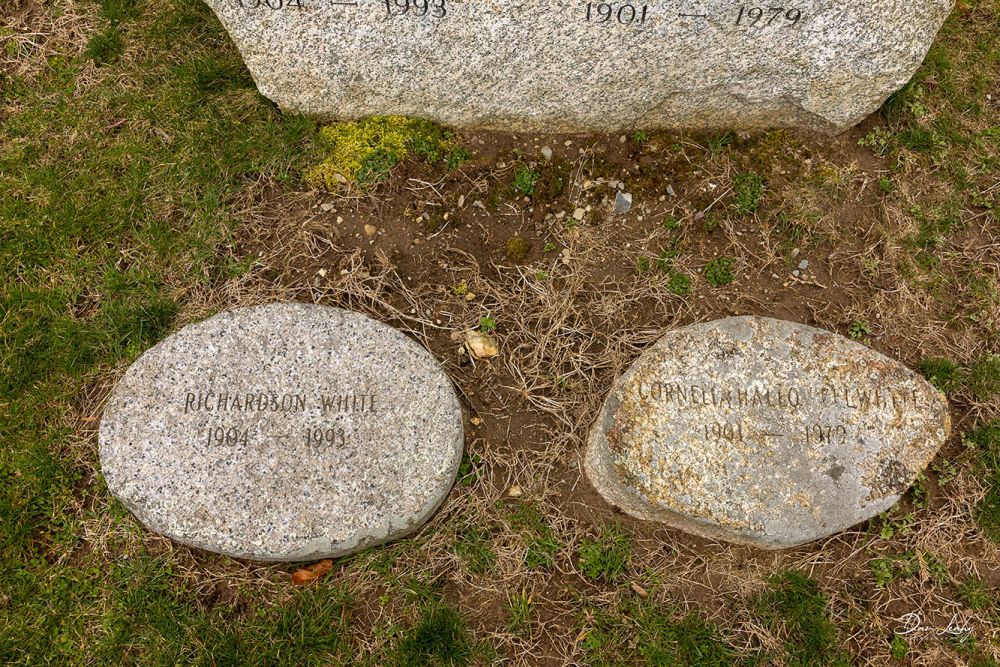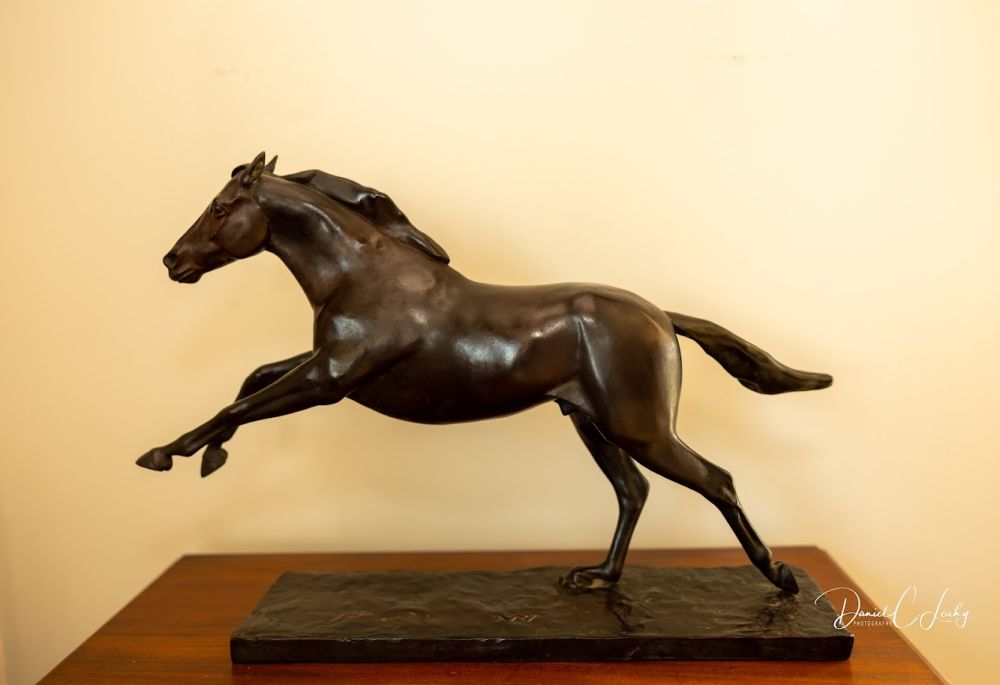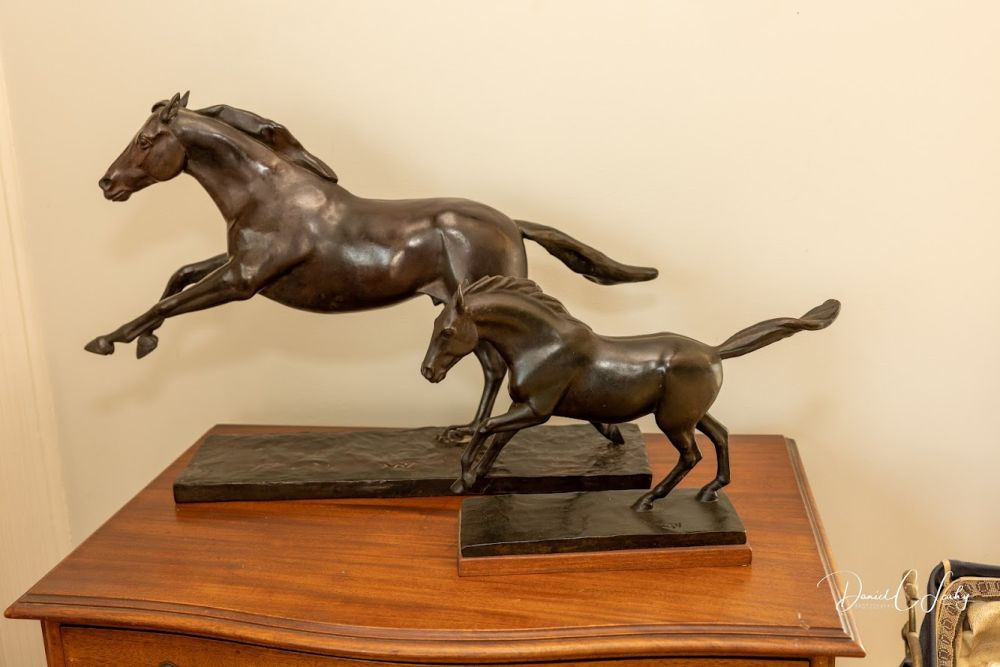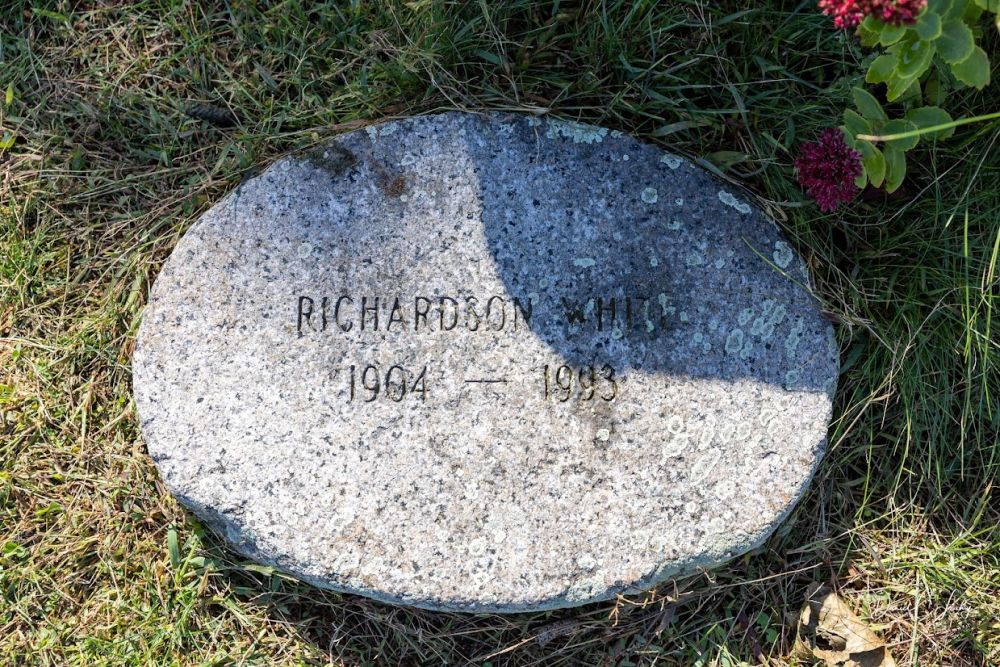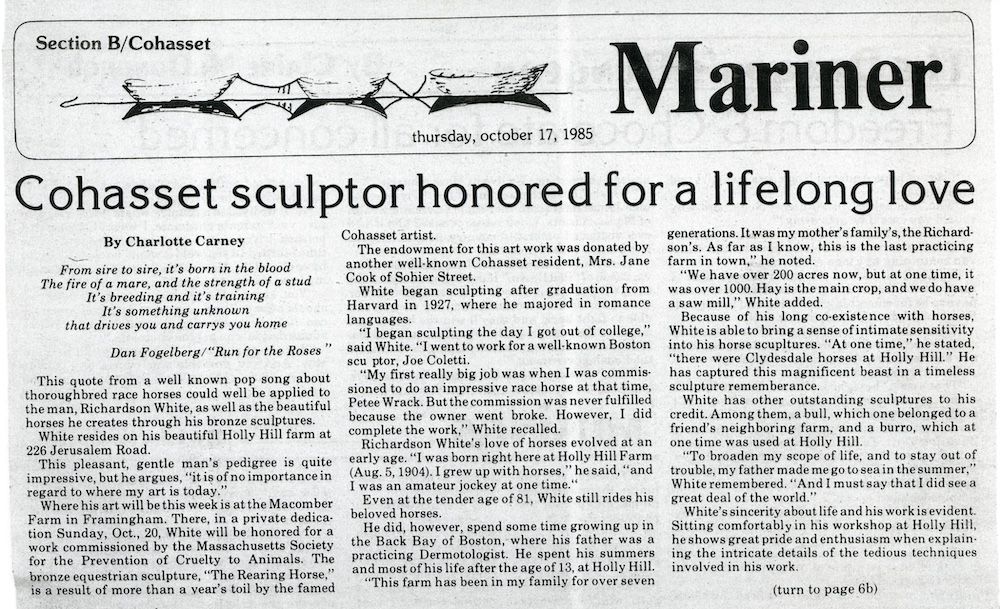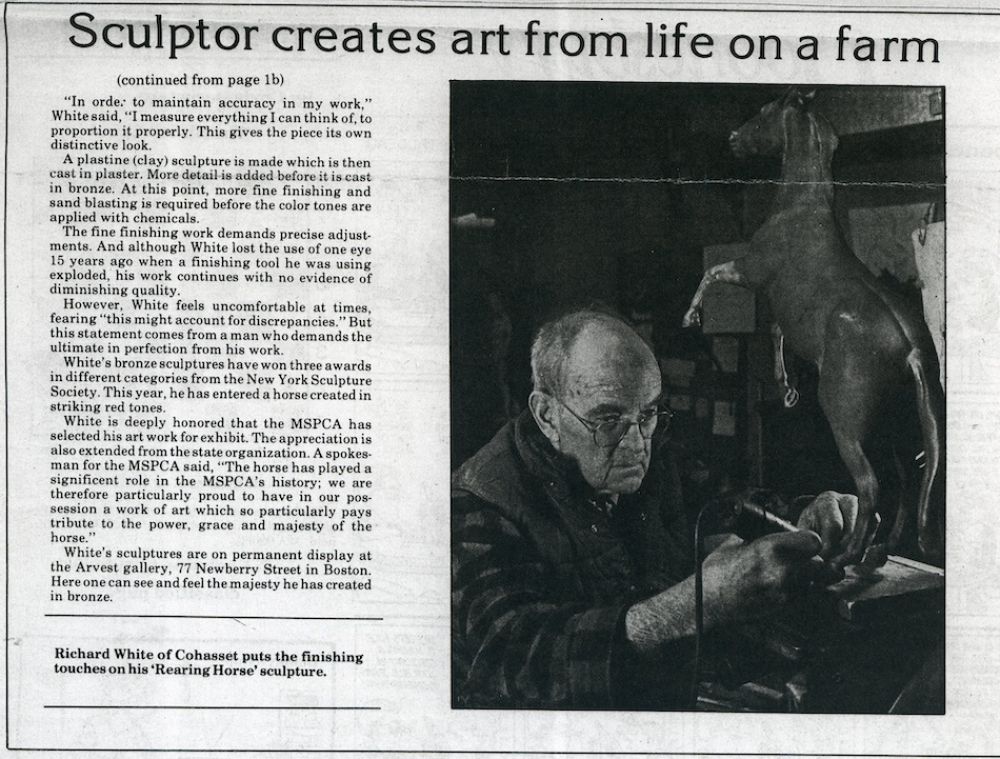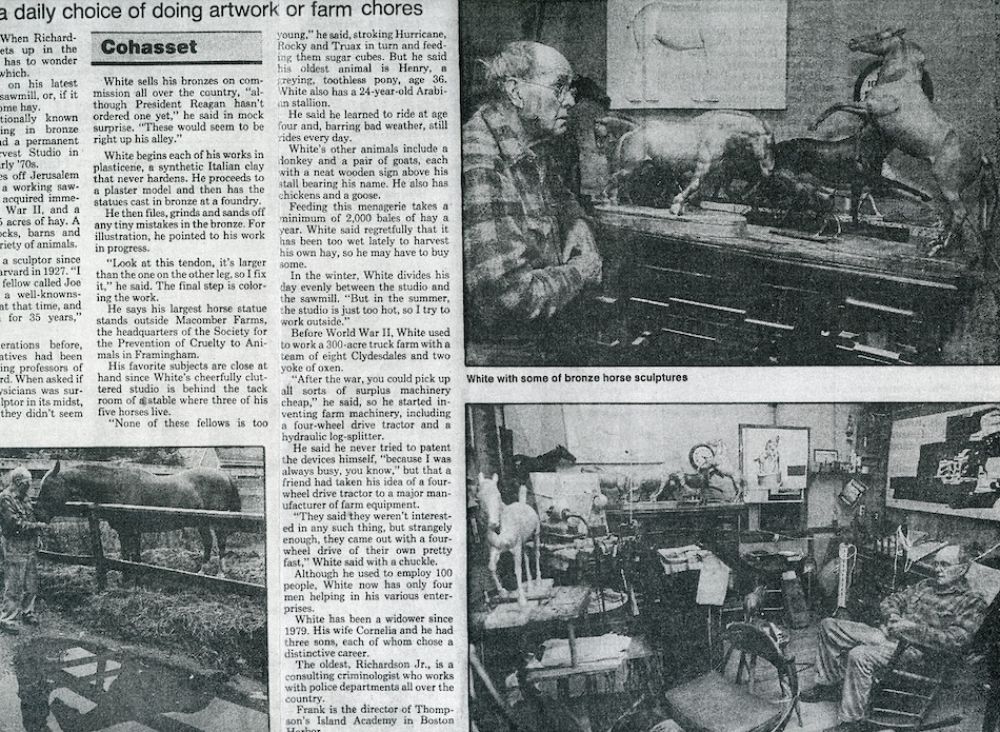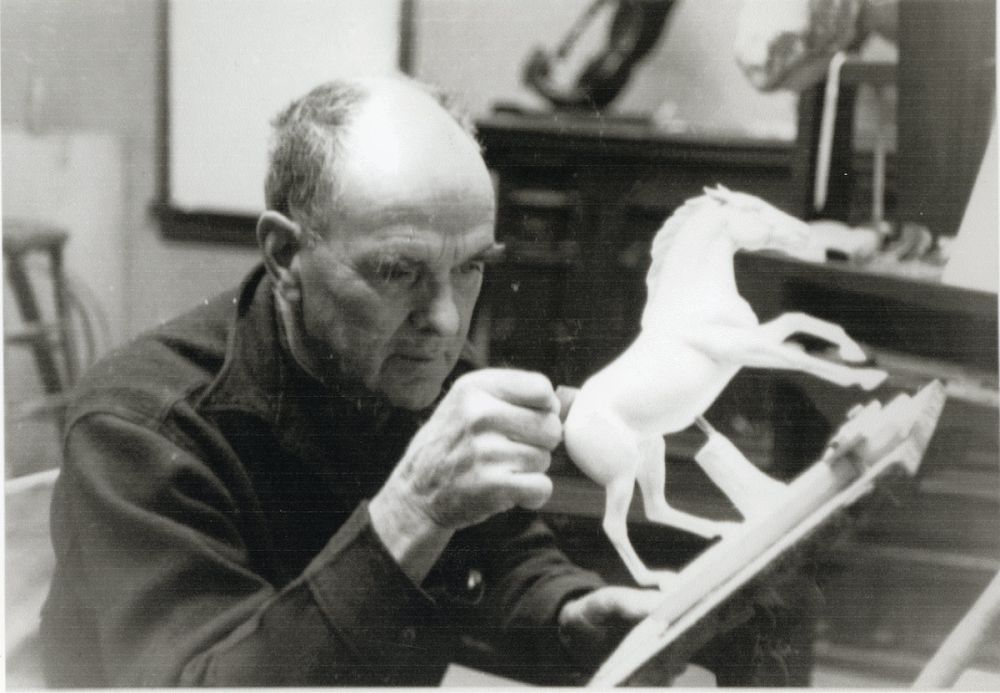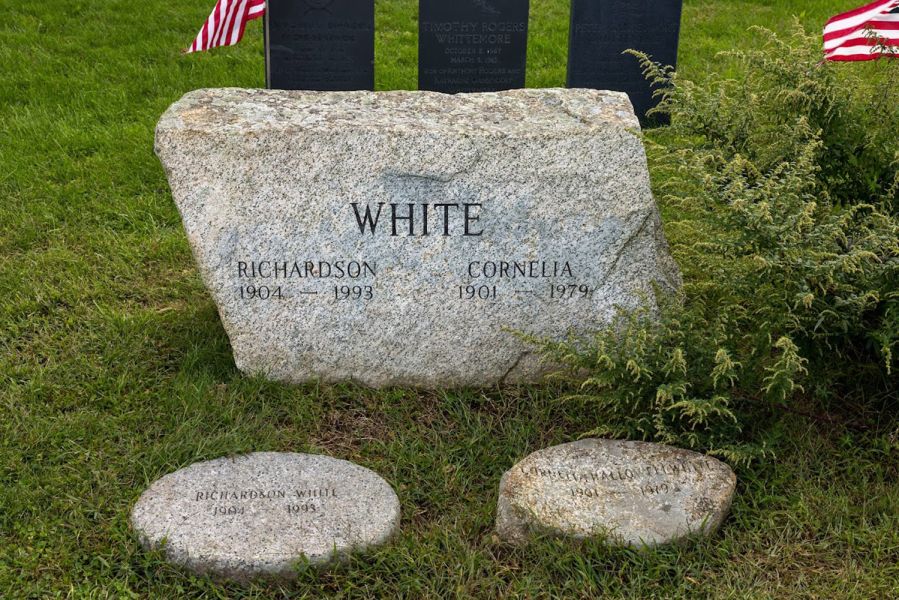
46. Richardson White
Richardson White was a gentleman farmer and a prominent horse sculptor whose work is at the Museum of Fine Arts, Boston. The White family had owned farms along Jerusalem Road after 1770s. In 1845 Richardson's great-grandparents Thomas and Olivia Richardson purchased another farm, naming it Holly Hill. White had a passion for horses participating in fox hunting, steeplechasing, and flat racing on the farm. He studied their movements through his childhood and adulthood. After graduating from Harvard, he began his sculpture studies at Joseph A. Colletti's Boston studio, a former assistant to painter John Singer Sargent. Coletti (1898-1973) was a sculptor active in the city from the 1920s through the early 1970s. Private individuals and public and private institutions commissioned much of his work.
In the 1920s, Richardson and his wife, Cornelia, became the first Whites to live full-time at the Holly Hill Farm. He set up a studio, and a blacksmith shop and began running the farm as a commercial venture. Stables, a paddock area, and grazing horses surrounded his studio. He created expressive bronzes of horses with increased insight and grace, accurately capturing the power, energy, and mechanics of horses in motion. His works gained great notoriety with "Great Horse," acquired by the Museum of Fine Arts, Boston, "Rearing Thoroughbred," installed outside the Massachusetts Society for the Prevention of Cruelty to Animals in Jamaica Plain, Massachusetts, and "Walking Hunter," earning a National Sculpture Society prize for its realistic depiction.
Holly Hill Farm grew in prominence during the 1950s. It was the headquarters for a 100-acre vegetable "truck" farm before being converted to growing hay. To curb development in the 1980s, Richardson and his sister Ellen Cabot wisely gave 119 acres to the Trustees of the Reservations. Today, the organic, educational farm remains in the family and is focused on regenerative farming practices. Holly Hill offers on-site agricultural programs for children and adults, teaching the next generation about nature, ecology, sustainable farming, and selling fresh local produce and goods. The farm was never far from Richardson's heart. The large monument stone and the smaller gravestone, a rider’s mounting block, are from the farm.
Gallery (click any image to view the slideshow)
46. Richardson White
- Plaques 1-32
- David Bates
- Levi Willcutt
- John Jacob
- Ignatius Orcutt
- Rev. Nehemiah Hobart
- Deacon Abel Kent
- Rev. John Browne
- Abel Kent
- Bethiah "Resolution" Nichols Tower
- Abraham Tower
- Abraham Hobart Tower
- Isaac Lincoln
- Paul Pratt
- Margaret Tower, Ibrook Tower
- Daniel Tower
- Gilbert S. Tower
- Thomas Stevenson
- John Stephenson
- Capt. James Hall, Persis Tower Hall
- Elijah Lincoln
- Sarah Pratt
- Cousens Family
- Capt. George Hall
- Ezekiel Stetson, John Stetson, Lydia Stutson
- Urian Oakes
- James Stoddard
- Aaron Pratt
- Christopher James
- Phineas/Aaron Pratt Family Monument
- William Hanlon
- Thomas W. Clarke
- James W. Nichols
- Plaques 33-39
- Plaques 40-54
- Charles B. Nichols
- Helen Howes Vosoff
- Levi B. Gaylord
- Edward Tower
- Francis W. Hagerty, Mary F. Hagerty
- Howard S. Reid, MD
- Richardson White
- Vietnam Casualties
- Marion H. Gibson Woods
- Jessie Bancroft Cox, William C. Cox, Jane Steele Cook
- Lawrence P. Barrett
- Stuart Robson
- George H. Mealy
- Samuel L. Jenkins
- Joseph H. Smith
- Plaques 55-64
- Artistic Features


